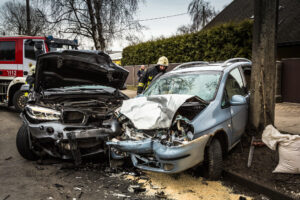


Every weekend, motorsports captivate fans around the world with speed, strategy, and split-second decisions. Beneath the thrill of the race lies a constant battle against risk. Professional drivers rely on sharp instincts, advanced vehicle tech, and strict safety protocols to avoid catastrophic outcomes. While most people never experience a racetrack firsthand, the lessons learned in this high-stakes environment have real-world relevance.
Car accidents happen daily on public roads, often with severe consequences. Although the average driver doesn't face the same speeds or conditions as a professional racer, the principles of risk mitigation, awareness, and response apply universally. By examining what motorsports has taught us about crashes and safety, we gain insights that can improve outcomes for everyday drivers involved in accidents.
In racing, understanding the physics behind a crash is essential. Forces increase exponentially with speed, and small miscalculations can lead to dramatic results. Engineers and drivers work together to design vehicles that absorb energy effectively, minimizing harm to the individual. These same concepts -- crumple zones, roll cages, and restraint systems -- have trickled into consumer vehicle design, directly reducing fatalities on the highway.
According to www.michaelwaks.com, In typical car accidents, many of the same dynamics are at play. Sudden deceleration, driver reflexes, and point of impact all affect injury severity. However, most people aren't trained to react under pressure like racecar drivers are. This difference in preparedness is critical. The motorsport world has long prioritized simulation training and emergency drills, practices that could benefit everyday drivers through public education and better licensing processes.
When considering everyday driving environments, it's important to note how conditions like weather, traffic flow, and visibility can influence crash outcomes. Unlike controlled tracks, real-world roads are unpredictable, making it all the more essential for drivers to adopt crash-prevention habits learned from racing -- anticipating potential hazards and keeping their vehicles properly maintained.
Motorsports have been instrumental in the development of innovative safety features. Technologies such as the HANS device (Head and Neck Support) and five-point harnesses have inspired advancements in airbags and seatbelt systems. These innovations, when adapted for commercial vehicles, have saved countless lives. The key takeaway is proactive design -- building safety into the structure rather than treating it as an afterthought.
In real-world crashes, the presence and performance of safety features often determine whether a collision ends in minor bruises or long-term trauma. Despite this, many drivers overlook the importance of vehicle maintenance and model safety ratings. Motorsports reinforce that safety doesn't end with purchase; it involves routine inspection and respect for mechanical limitations. The more aware we are of our car's protective capabilities, the better we can trust them when it counts.
As newer cars adopt technologies like automatic emergency braking, lane assist, and collision warnings, there's growing potential to prevent crashes altogether. These systems, initially tested in high-speed environments, bring race-inspired intelligence to the average commute, offering both passive and active support to help reduce injury risks.
A racecar driver's greatest asset isn't just skill -- it's discipline. They train their minds to remain calm under pressure, stay hyper-focused, and adapt instantly to changing conditions. This mental toughness reduces error and improves reaction time. On public roads, distracted driving remains a leading cause of accidents. Unlike professionals, average drivers contend with phones, fatigue, and emotional stress behind the wheel.
We can learn from motorsports by treating every drive with similar mental engagement. Being intentional about reaction times, maintaining a clear head, and avoiding multitasking while driving all contribute to fewer accidents. Racing culture demands total focus, and that mindset -- if adopted by everyday drivers -- could dramatically reduce collisions caused by human error.
Incorporating mental conditioning techniques such as visualization, situational awareness drills, and stress management can further reduce road risk. While these practices are commonplace in the racing world, there's room to bring them into driver education programs, preparing everyday motorists to handle unexpected challenges more calmly and competently.
When an accident occurs on the racetrack, response time is immediate. Medical personnel, fire crews, and communication teams work in tandem to assess and treat injuries. This coordinated effort saves lives and limits damage. The racing world has shown that the minutes after a crash are as important as any safety feature built into the car.
Off the track, response times vary widely. Delays in emergency services or lack of immediate first aid knowledge can worsen injury outcomes. Public awareness campaigns could borrow from motorsports' efficiency by emphasizing the importance of fast, organized response. Additionally, how a driver handles the aftermath -- gathering evidence, documenting injuries, and seeking medical evaluation -- is crucial for insurance claims and legal recovery. Motorsports culture reminds us that what happens after impact matters just as much as the crash itself.
Training the public in basic first aid, promoting the use of in-vehicle emergency kits, and implementing real-time crash notification systems can improve post-collision outcomes. These practices, adapted from motorsport operations, could significantly increase survival rates and improve recovery experiences for everyday drivers.
The world of motorsports offers more than entertainment; it delivers practical lessons in risk, preparedness, and resilience. Although most drivers will never face the G-forces of a racetrack, the principles of controlled driving, attention to safety, and quick recovery translate seamlessly to everyday road use. These shared values create an opportunity to make driving safer across the board.
By treating public roads with the same seriousness as a track, we promote a culture of responsibility. Learning from professional racing doesn't require a helmet or pit crew -- just a commitment to safety, awareness, and smarter responses. Whether you're behind the wheel of a racecar or commuting to work, these lessons can make the difference between disaster and survival.
Your email address will not be published. Required fields are marked *
No comments yet. Be the first to comment!